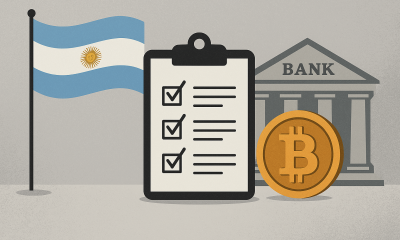
Metaverse
What’s in India’s first AI rulebook? – Crypto News
The ministry of electronics and information technology (MeitY) introduced India’s first comprehensive artificial intelligence (AI) governance guidelines on 5 November, marking a significant step in shaping how AI will be developed, deployed, and regulated in the country.
With this, India joins a long list of countries that are drafting and adopting national strategies, ethical frameworks and regulatory tools for AI. Mint decodes India’s approach to AI governance and what it means for the industry.
What do the guidelines say?
The guidelines are structured around six governance pillars: infrastructure, capacity building, policy and regulation, risk mitigation, accountability, and institutions.
- Under infrastructure, they advocate expanding access to foundational resources.
- Capacity building emphasises developing skills, training, and awareness among citizens, public officials, and regulators, particularly in underserved areas.
- In the area of policy and regulation, the guidelines recommend reviewing existing laws and introducing targeted amendments where necessary.
- To support oversight, standards, and safety research, the guidelines introduce an AI Safety Institute, a Technology & Policy Expert Committee, and an AI Governance Group.
They also outline seven guiding principles, or sutras – trust, people first, innovation over restraint, fairness and equity, accountability, understandable by design, and safety, resilience, and sustainability.
What’s the government’s action plan?
The guidelines mention an action plan mapped to short-term, medium-term and long-term goals.
- The short-term plan includes forming governance bodies, drafting standards and India-specific AI risk assessment and classification frameworks with sectoral inputs, preparing the groundwork for AI incidents database and grievance redressal mechanisms, and launching public awareness and training programs for citizens and regulators on AI capabilities and risks.
- The medium-term plan includes piloting regulatory sandboxes, publishing standards, amending laws as needed and expanding national datasets.
- The long-term plan involves integrating AI safety testing, continuously updating sectoral laws, preparing for future risk and opportunities, and participating in global AI governance efforts.
Do other countries have such guidelines?
Many countries have introduced AI governance guidelines, ethical frameworks, or regulatory initiatives in the past couple of years.
For instance, in 2024 the European Union passed the EU AI Act, one of the most comprehensive AI regulatory frameworks worldwide. China has introduced and updated rules for generative AI services, content labeling and algorithm registration in the past two years as part of a more centralised governance model.
Singapore published its ‘Model AI governance framework’ back in 2019 and updated it for generative AI in 2024, while Canada has drafted the Artificial intelligence and Data Act (AIDA) to regulate ‘high-impact’ AI.
Which laws will govern AI in India?
The Indian government isn’t proposing a single comprehensive AI law at this stage. Its guidelines recommend applying and strengthening existing sectoral laws to govern AI systems. These include the Digital Personal Data Protection Act, 2023 for privacy and data-use compliance, and the Information Technology Act, 2000 for accountability, content moderation, and cybersecurity obligations.
Other relevant legal instruments include the Copyright Act, 1957 to address ownership of AI-generated content, and consumer protection, competition, and criminal laws that can be invoked for harm, fraud, or malpractice.
MeitY said these laws already provide a foundation for responsible AI deployment, but amendments or new rules may be introduced in the future as AI technology and risks evolve.
What does this mean for the industry?
For India’s technology and startup ecosystem, the AI governance guidelines mark a shift toward a more organised but still innovation-friendly regulatory setup.
Rather than impose a heavy compliance burden, the framework focuses on ‘innovation over restraint’, encouraging companies to follow voluntary best practices, stay transparent, and build ethics into their design.
It also creates space for regulatory sandboxes and graded accountability, providing room to test and experiment safely. For the industry, this means clearer rules around data use, model transparency, and risk management, along with greater policy stability that could boost investment and global partnerships.
However, while the guidelines mark a strong starting point for ensuring responsible AI deployment, they don’t yet spell out how enforcement or accountability will work, leaving much to depend on future interpretation and institutional capacity.
-
Technology5 days ago
Crypto Lawyer Bill Morgan Praises Ripple’s Multi-Chain Strategy as RLUSD Hits $1.1B – Crypto News
-

 Cryptocurrency5 days ago
Cryptocurrency5 days agoIlluminating progress: Is a $140K income ‘poor’? – Crypto News
-

 others5 days ago
others5 days agoGold holds strong at $4,200 as Fed-cut anticipation builds – Crypto News
-

 Blockchain4 days ago
Blockchain4 days agoAnalyst Reveals What You Should Look Out For – Crypto News
-
others1 week ago
Why Is Crypto Market Recovering? – Crypto News
-
Technology1 week ago
Breaking: First U.S. Chainlink ETF Goes Live as Grayscale Launches ‘GLNK’ – Crypto News
-
Cryptocurrency1 week ago
Crypto Platform Polymarket Relaunches in U.S. Following CFTC Approval – Crypto News
-
others1 week ago
$12T Charles Schwab to Launch Bitcoin and Ethereum Trading in Early 2026, CEO Confirms – Crypto News
-

 Cryptocurrency1 week ago
Cryptocurrency1 week ago‘Get it done on time’ – Lawmakers push regulators on GENIUS Act rollout – Crypto News
-
Business1 week ago
Crypto Platform Polymarket Relaunches in U.S. Following CFTC Approval – Crypto News
-

 Cryptocurrency1 week ago
Cryptocurrency1 week agoUK recognises crypto as property in major digital asset shift – Crypto News
-
others6 days ago
Bitcoin Price Forecast as BlackRock Sends $125M in BTC to Coinbase — Is a Crash Inevitable? – Crypto News
-

 Technology6 days ago
Technology6 days agoSamsung Galaxy S25 Ultra 5G for under ₹80,000 on Flipkart? Here’s how the deal works – Crypto News
-

 Cryptocurrency5 days ago
Cryptocurrency5 days agoFlorida Appeals Court Revives $80M Bitcoin Theft – Crypto News
-

 Cryptocurrency4 days ago
Cryptocurrency4 days agoArgentina moves to reshape crypto rules as banks prepare for Bitcoin services – Crypto News
-
others1 week ago
Strategy CEO Says Bitcoin Sales Unlikely Before 2029 After Creating $1.44B Dividend Reserves – Crypto News
-
Business1 week ago
Sui Price Surges 10% As Vanguard Group Adds SUI to Bitwise 10 Crypto Index – Crypto News
-

 Cryptocurrency1 week ago
Cryptocurrency1 week agoRipple CTO Shares Hilarious Email from Jed McCaleb Impersonator – Crypto News
-
Business1 week ago
Senator Tim Scott Floats December 17 and 18 For Crypto Market Bill Markup – Crypto News
-

 Cryptocurrency1 week ago
Cryptocurrency1 week agoBTC staking platform Babylon teams up with Aave for Bitcoin-backed DeFi insurance – Crypto News
-

 Blockchain1 week ago
Blockchain1 week agoSolana (SOL) Cools Off After Rally While Market Eyes a Resistance Break – Crypto News
-

 Technology6 days ago
Technology6 days agoWorking on a screen all day? These 8 LED monitors in Dec 2025 are kinder on your eyes – Crypto News
-

 others6 days ago
others6 days agoThe rally to 7120 continues – Crypto News
-
others5 days ago
Morgan Stanley Turns Bullish, Says Fed Will Cut Rates by 25bps This Month – Crypto News
-

 Cryptocurrency5 days ago
Cryptocurrency5 days agoCrypto Holiday Gift Guide 2025 – Crypto News
-

 others5 days ago
others5 days agoNasdaq futures hold key structure as price compresses toward major resistance zones – Crypto News
-

 others5 days ago
others5 days agoNasdaq futures hold key structure as price compresses toward major resistance zones – Crypto News
-
others4 days ago
Breaking: Labor Department Cancels October PPI Inflation Report Ahead of FOMC Meeting – Crypto News
-

 others1 week ago
others1 week agoEUR/GBP edges higher as Eurozone inflation supports Euro, BoE weighs – Crypto News
-

 Cryptocurrency1 week ago
Cryptocurrency1 week agoSHIB Exec Calls FBI, RCMP and Interpol to Action on Surging Cyber Attacks – Crypto News
-

 Metaverse1 week ago
Metaverse1 week agoIs ChatGPT working again? OpenAI’s latest update as users report outages – Crypto News
-
Business1 week ago
Trump Sets Early 2026 Timeline for New Fed Chair Pick – Crypto News
-

 Cryptocurrency1 week ago
Cryptocurrency1 week agoVanguard reverses course, opens door to Bitcoin, Ethereum, XRP, and Solana ETFs – Crypto News
-
others1 week ago
XRP News: Ripple Expands Payments Service With RedotPay Integration – Crypto News
-

 Blockchain1 week ago
Blockchain1 week agoLedger Finds Chip Flaw Allowing Complete Phone Takeover – Crypto News
-
Business1 week ago
Kalshi, Robinhood and Crypto com Face Cease & Desist Order in Connecticut – Crypto News
-

 Technology7 days ago
Technology7 days agoCloudflare Resolved Services Issues Caused by Software Update – Crypto News
-

 Technology6 days ago
Technology6 days agoFrom security camera to gaming hub: 6 Easy tricks to make your old smartphone genuinely useful again – Crypto News
-

 Blockchain5 days ago
Blockchain5 days agoBitcoin Buries The Tulip Myth After 17 Years: Balchunas – Crypto News
-

 Cryptocurrency5 days ago
Cryptocurrency5 days agoWhy Ethereum strengthens despite whale selling – Inside Asia premium twist – Crypto News
-

 Technology4 days ago
Technology4 days agoStarlink India pricing revealed: How much does monthly plan cost and what are its benefits? – Crypto News
-

 Blockchain3 days ago
Blockchain3 days agoStripe and Paradigm Open Tempo Blockchain Project to Public – Crypto News
-
Business1 week ago
Kraken to Acquire Backed Finance, Expanding Tokenized Equities Ahead of 2026 IPO – Crypto News
-
Business1 week ago
Litecoin Price Jumps 10% as Vanguard Opens LTCC Access — How High Can LTC Go? – Crypto News
-

 Technology1 week ago
Technology1 week agoMeet the Indian-origin AI founders dominating Forbes’ latest 30 Under 30 list – Crypto News
-
Cryptocurrency1 week ago
Hedera Price Surges 10% After Canary Capital HBAR ETF Goes Live on Vanguard – Crypto News
-

 Blockchain1 week ago
Blockchain1 week agoLeveraged ETFs Tied To Strategy Suffer Major Losses – Crypto News
-

 Metaverse1 week ago
Metaverse1 week agoIndian enterprises all-set to take an AI leap as partners guide adoption – Crypto News
-
Business1 week ago
December Fed Rate Cut Prospects Strengthen After ADP Shows Deepening Labor Market Weakness – Crypto News
-

 Blockchain1 week ago
Blockchain1 week agoTaiwan to Pass Stablecoin Regulations in Late 2026: Report – Crypto News














